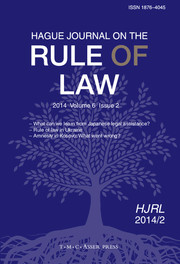Article contents
The Fall of European Communism: 20 Years After
Published online by Cambridge University Press: 28 September 2009
Abstract
In 1989, starting in Poland and spreading quickly throughout Central and Eastern Europe, European communism imploded. In some places new states were born, in others old ones re-established their independence. In all there was talk of ‘transition’ to something very different, something at the same time very new and very old.
20 years on, a lot has changed. Much that seemed revolutionary then seems old hat now. And the attempt to cut and paste forms, structures, and successes from ‘normal’ societies, as the West was known in the East, has turned out to be a far from conservative enterprise, not simple, and not always popular. Indeed, homegrown conservatives have come to be suspicious of it, often accusing their opponents – those devoted to democracy, capitalism and the rule of law, for example – of untraditional and unforgivable radicalism. The suspicion is general, encompassing many ideals and practices believed to be alien imports. It is most vocally directed against democracy and capitalism. However it has also reached – less perhaps as rejection in principle than disappointment in practice – that animating ideal which has had such a renaissance since the collapse of communism and in connection with it: the rule of law.
For this special issue, six distinguished students of post-communism were asked to reflect on the fate of the rule of law in areas that they knew best; of course they could stray where they felt necessary. Balcerowicz focused primarily on the economy, Hendley on Russian courts, Ganev on east European constitutional and regular courts, Skąpska on privatisation, Czarnota on ‘transitional justice’ or ‘dealing with the past,’ Přibáň on the implications of a ‘return to Europe’ both as ambition and achievement.
- Type
- Articles
- Information
- Copyright
- Copyright © T.M.C. Asser Press and the Authors 2009
- 2
- Cited by




